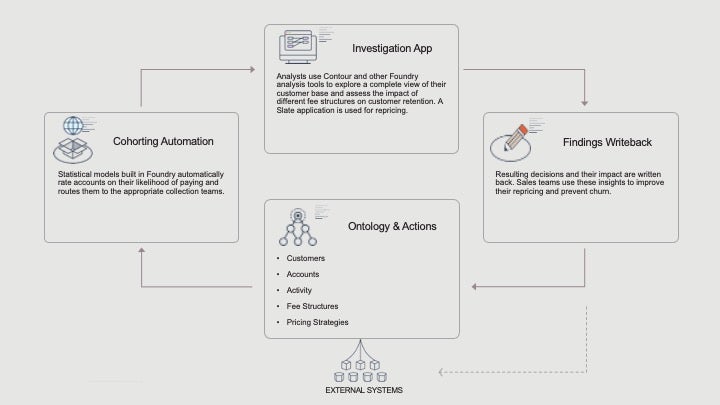Improving profitability of EV chargepoints through integrated location optimization
Industry Sector: Other Infrastructure
Business Function: Production
Foundry was used at a Charge Point Operator (CPO) to prioritize where to build a network of EV Charging Stations and model the financial performance of these investments, allowing network planning analysts to optimize the uptake and profitability of the stations as well as significantly speed up the evaluation time.
Challenge
Prior to Foundry, evaluations on where to build charging infrastructure for EV have been made in Excel by pulling information from several different applications manually. This process was very labor intensive even after leveraging multiple scripts to automate it as much as possible. Furthermore, due to technical limitations, tradeoffs had to be made between execution speed and the level of detail / number of factors included into the analysis. Evaluations take a long time and critical factors (such as existence of nearby planned locations) have not been taken into account.
Solution
Using Foundry, connections to all important applications and data sources were established, syncing the data automatically and frequently. The workload required to rerun the analysis went down to zero, enabling analysts to continuously test and iterate. Beyond existing data, Foundry enabled the users to add additional, 3rd party data ad-hoc / directly into the data asset.
These workflows let users build and simulate entire networks, modeling costs, revenue, customer, utilization, and even take the electrical grid's capacity into account. Today, the decision is based on a broader picture, accounting for more factors without sacrificing execution speed. Moreover, the CPO increased the speed at which they could perform evaluations, as decisions are more straight forward and understandable when looking at the complete picture.
The same solution and data assets are also used by maintenance engineers, ensuring decisions can be made on a transparent data foundation across different parts of the organization.

Users and stakeholders
- Network Planning
- Location Acquisitions
Impact
- Reduced evaluation time by a factor of 5.
- Reduced number of applications consulted during evaluation from seven to just Foundry.
- 8-digit dollar amount expected increase in profitability.
Implement a similar use case
This use case implements the following Pattern. Follow the link below to read more about a particular Pattern and learn how it is implemented within Foundry.
- Resource allocation & optimization (used for 3 other use cases)
Want more information on this use case? Looking to implement something similar? Get started with Palantir. ↗